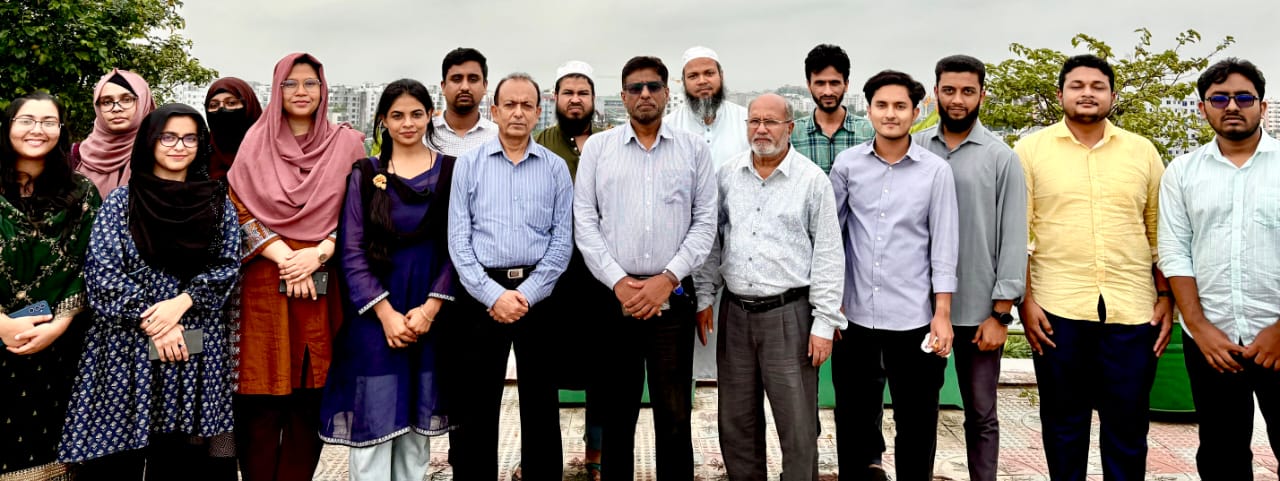
Design Unit (DGN)
We provide design and planning solutions for IWM.

We provide design and planning solutions for IWM.
The Design Unit (DGN) of IWM plays a crucial role in addressing water management challenges across diverse development sectors, including climate change advocacy, flood management, irrigation management, polder and drainage management systems, and inland waterways development. From planning to the preparation of outline, preliminary, feasibility level design and detailed working designs, the DGN ensures effective intervention strategies.
Specializing in the design and development of critical hydraulic structures, the DGN focuses on water management structures, guide bunds, embankments, and dams, contributing to the sustainable management and preservation of essential water resources. With a commitment to sustainable solutions, the team delivers optimal design solutions by considering hydrological, morphological, and hydraulic parameters. Key areas of expertise include coastal protection, riverbank stabilization, embankment construction, dredging, and flood risk management, inland waterways structures, ancillary building structures and landscaping with utility developments, supported by extensive experience in research, design, and feasibility studies.

Flood/ Polder drainage management structures in Bangladesh are vital for mitigating the impacts of frequent and severe flooding caused by monsoons, river overflows, and cyclones. Key structures include:
These systems are integrated with early warning systems and floodplain zoning to enhance disaster preparedness and resilience. Polder drainage management structures in Bangladesh are essential for managing waterlogging and improving agricultural productivity in low-lying coastal and riverine areas. These structures are designed to balance flood control, salinity intrusion prevention, and water availability for agriculture and other uses.
Hydrological and Morphological Model Study for Integrated Water Resources Management and Development of Kutubdia and Matarbari Island. The overall goal of the project is to conduct a comprehensive study for Integrated Development and Water Resources Management of Kutubdia and Matarbari Island, as well as to develop long-term solutions for Water Resources Management that take into account technical, environmental, and social factors. The designed interventions for this project by IWM in 2023 are as follows.
Kutubdia Island (Polder 71)
• Re-sectioning and slope protection works of about 40.18 km embankment.
• Construction of 10 new regulators for the improvement of drainage.
• Re-excavation of 17 khals for drainage purpose to mitigate waterlogging problem and water conservation purpose during dry season.
Matarbari Island (Polder 70
• Re-sectioning and slope protections works of about 17.89 km embankment.
• Construction of 7 new regulators for drainage improvement.
• Re-excavation of 5 khals to enhance drainage.
• Dredging of Kuhelia river, Matarbari Khal and Nunachori Khal which is required for smooth navigation. It also helps drainage of Matarbari polder.
Detailed Study for Restoration and Development of Water Resources Management System of Polder 31 under Dacope Upazila in Khulna District.
The overall objective of this project is to conduct a holistic and integrated study in devising a long-term plan for restoration and development of water resource management system of Polder 31. The designed interventions for this project by IWM in 2024 are as follows.
• 48 km of embankment design around the polder as well as Bank and Slope protection works of about 21.82 km.
• Construction of 23 drainage and flushing regulators, 3 drainage outlets and 7 inlets for drainage, irrigation, fisheries and domestic purpose.
• Re-excavation of 61 khals for drainage improvement and to mitigate waterlogging problem.

River and coastal erosion management structures in Bangladesh are critical for protecting vulnerable areas from land loss and preserving livelihoods. Key structures include:
These measures are vital for long-term resilience against erosion caused by dynamic rivers and rising sea levels.

Irrigation management structures in Bangladesh are essential for ensuring efficient water distribution and enhancing agricultural productivity. Key structures include:
These structures ensure equitable water distribution, minimize wastage, and support sustainable agriculture in diverse regions.

Navigation improvement measures in Bangladesh focus on enhancing the efficiency and safety of inland waterways, which are vital for transportation and trade. Key measures include:
These measures ensure safe, efficient, and sustainable inland water transport across Bangladesh's extensive river network.

Port and Inland Water Transport (IWT) facilitation structures in Bangladesh are critical for supporting trade, transportation, and economic development. Key structures include:
These structures enhance connectivity, promote efficient inland waterway transport, and boost the country’s logistics and trade infrastructure.

Road connectivity and building structures in Bangladesh are essential for enhancing transportation networks and supporting urban and rural development. Key components include:
These infrastructures contribute to improved mobility, economic growth, and overall national development.

Building structures in Bangladesh are diverse, supporting residential, commercial, industrial, and institutional needs. Key types include:
These structures are vital for supporting Bangladesh's rapid urbanization and economic development.

Our Core Team

Email: nzr@iwmbd.org
Mobile: 01711134034